|
The main Albion text below comes from the NYS Archives'
Guide to Records of the DOCS
web pages:
The NYS Archives' Guide to Records of the Department of Correctional Services describes more than 300 records series comprising approxi- mately 4,000 cubic feet of records. . . . The records date from 1797 to about 1980 . . .
XXX
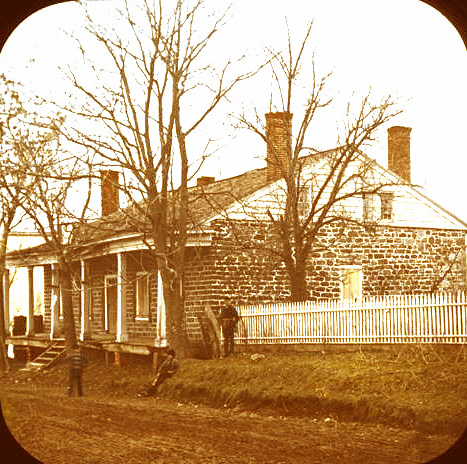
Above sepia facsimile is based on a grayscale NYS Archives photo (circa 1880-1910) that provides an exterior view of an old stone house near Tappan, NY, where British Major John Andrâe was held prisoner from Sept. 23, 1780, when he was captured as a spy (in the Benedict Arnold plot) until execution by hanging Oct. 2, 1780. Steps lead directly from the dirt road to the front porch of the house sometimes called "Major Andrâe's Prison."
Click facsimile for full on-line NYS "The Digital Collections original as well as information about the photo, its subject matter and copyrights.
|
|
Albion
Correctional Facility
Albion Correctional Facility is located in Albion, Orleans County. It is classified as a medium security correctional facility for females 16 years of age or older. It functions as a general confinement facility and a work release facility. Albion presently confines approximately 500 inmates.
The Western House of Refuge for Women at Albion was established by the Laws of 1890, Chapter 238. It opened in 1893 for women between the ages 15 and 30 who were convicted of petit larceny, habitual drunkenness, prostitution, or other misdemeanors.
Albion's program included academic training to the sixth grade, vocational training, and religious training. It used a grading system to reward good behavior.
XXX
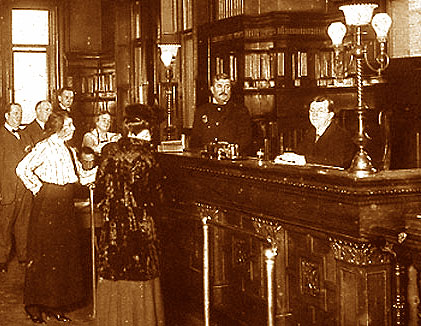
Above sepia facsimile is based on a grayscale NYS Archives photo that provides a 1900 view of a woman being sentenced to the Western House of Refuge for Women at Albion.Click facsimile for full on-line NYS "The Digital Collections original as well as information about the photo, its subject matter and copyrights.
|
|
Sentences were indeterminate and inmates could be held as long as five years.The institution operated under the jurisdiction of the State Board of Charities until 1926 when it was transferred to the new Department of Correction. In 1923, the name of the institution was changed to the Albion State Training School.
In 1931 (Chapter 546), the institution's name was changed to the Institution for Mentally Defective Delinquent Women. The institution took over the function of confining defective delinquent inmates from Bedford Hills, which in turn became the new State prison for women.
XXX
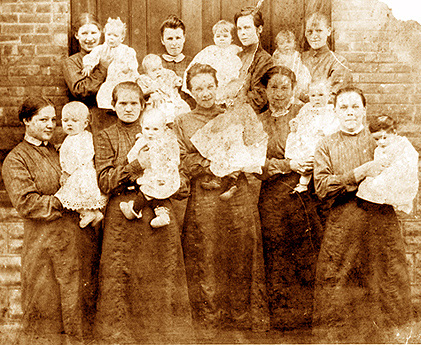
Above sepia facsimile is based on a grayscale NYS Archives photo that provides a 1915 view of infants of inmates at Albion.Click facsimile for full on-line NYS "The Digital Collections original as well as information about the photo, its subject matter and copyrights.
|
|
In 1932, the institution's name was changed back to Albion State Training School but its function remained the same.
In 1957 (Chapter 802), the Western Reformatory for Women was also established at Albion.
The reformatory used the same grounds and facilities as the Albion State Training School but they were managed as separate institutions.
In 1967, a narcotic rehabilitation center also opened at Albion and was operated by the Narcotic Addiction Control Commission.
In 1970, the reformatory was renamed the Western Correctional Facility and the training school renamed the Albion State Institution.
In 1971, the entire facility became the Albion Correctional Facility. .
The main text below comes from the Rochester Images'
Western House of
Refuge
page on the web site of
the Monroe County LibrarySystem:
XXX
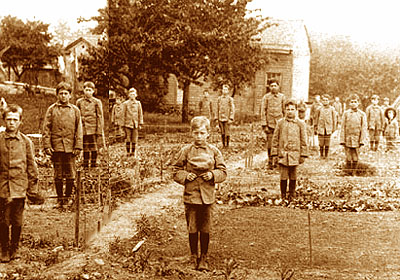
Above sepia facsimile is based on a grayscale NYS Archives photo that provides a circa 1910 view of young inmates at the State Agricultural and Industrial School, Monroe County.Click facsimile for full on-line NYS "The Digital Collections original as well as information about the photo, its subject matter and copyrights.
|
|
Western House of Refuge
for JDs, Monroe County
On May 8, 1846 the New York State Legislature created the Western House of Refuge, the first authorized state-supported institution for the confinement and reform of juvenile delinquents in the U.S. As of 1850, state law mandated that young men under the age of 16 could be committed to the W.H. of R. for vagrancy or a criminal conviction in a court located in Western New York.
A 42-acre site was purchased for the institution in the city of Rochester for $4,200. It was located in the northwest section of the city, west of Lake Avenue at the junction of Phelps Avenue and Backus Street.
The Western House of Refuge opened on August 11, 1849 with room for 50 juveniles. The first building for the institution, commonly known as the main building, was constructed in 1847. It fronted east on Backus Street (which incidentally was named after Dr. Frederick F. Backus, who was a physician and a manager at the W.H. of R.). . . .
XXX
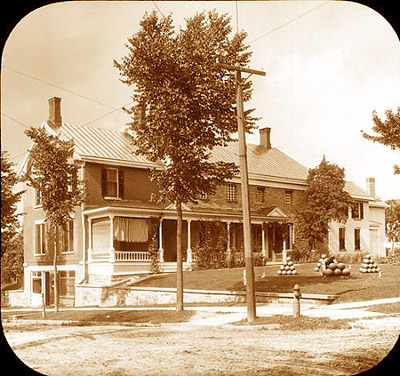
Above sepia facsimile is based on a grayscale NYS Archives photo that provides a circa 1890-1910 view of Fort Johnson in Johnstown, a large two-story brick building with several chimneys, wooden porch, and a large front lawn with cannon balls displayed in a pile. A smaller white building can be seen alongside it. Fort Johnstown was built by Sir William Johnson in 1772 on the corner of Perry and Montgomery Streets. Its original use was as a jail. The building was fortified and stockaded during the American Revolution. Click facsimile for full on-line NYS "The Digital Collections original as well as information about the photo, its subject matter and copyrights.
|
|
In 1875 it was ruled that girls under the age of 16 would also be sent to the Western House of Refuge. The first girls were admitted on October 3, 1876. . . .
The Western House of Refuge continually expanded through the years: in terms of its facilities, its policies of reform and its number of "inmates" . . . .
In 1884 the Western House of Refuge underwent an investigation by the New York State Assembly. The Assembly’s probe criticized the harsh corporal punishments, the contract labor system, the lack of schooling and the deficiency of proper classification for inmates.
This investigation proved to be the catalyst for a number of reforms. Contract labor was immediately abolished and corporal punishment was done away with by 1893.
XXX
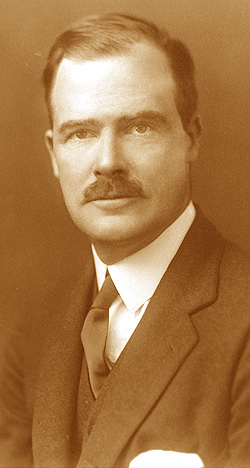
Above sepia facsimile is based on a grayscale NYS Archives photo (1934) portrait of Lithgow Osborne as NYS Conservation Commissioner. [NYCHS note: Lithgow Osborne, who also served as Ambassador to Norway and member of the NYS Crime Commission, was the son of one of NY's greatest penal reformers Thomas Mott Osborne whose concerns continue to inspire the organization carrying on his work -- the Osborne Association. Its leadership includes a number of Osborne family members, among them another Lithgow Osborne.]
Click facsimile for full on-line NYS "The Digital Collections original as well as information about the photo, its subject matter and copyrights.
|
|
The school system was graded like regular public schools and the boys were further classified by their character and behavior.
The biggest change came in 1886 when the institution changed its name from the Western House of Refuge to the State Industrial School.
Schools of technology were introduced with the idea that the best way for the youngsters to combat lives of crime was to teach them a skilled trade (like carpentry) in combination with reading, writing and arithmetic. . . .
Despite all the changes that had been made to the facilities (including the reconstruction of the main building after a fire in 1887) it was decided that a new environment was needed. In 1902 one thousand acres of land were purchased in the Town of Rush and it was decided to move the institution out "to the country."
The name was consequently changed to the State Agricultural and Industrial School. The move to Rush began in 1902. In 1904 the girls’ department was eliminated.
By 1907 the move was complete and the site in the city was abandoned. It was purchased by the city of Rochester, who transformed it into Exposition Park in 1911. Some of the buildings on the grounds were demolished (including the perimeter wall) while some of the others were transformed for re-use in the park.
This NYCHS presentation is intended as an introduction to the treasures
to be found among the on-line archival sources used and cited in it.
Viewers are encouraged to use links provided above to access those sources.
Below are links to some of the subject-related pages on this NYCHS site.
|
